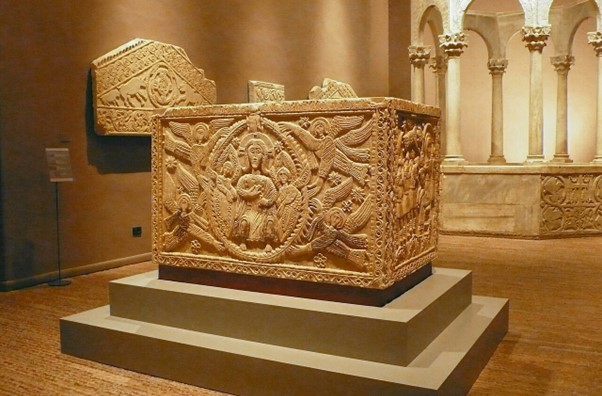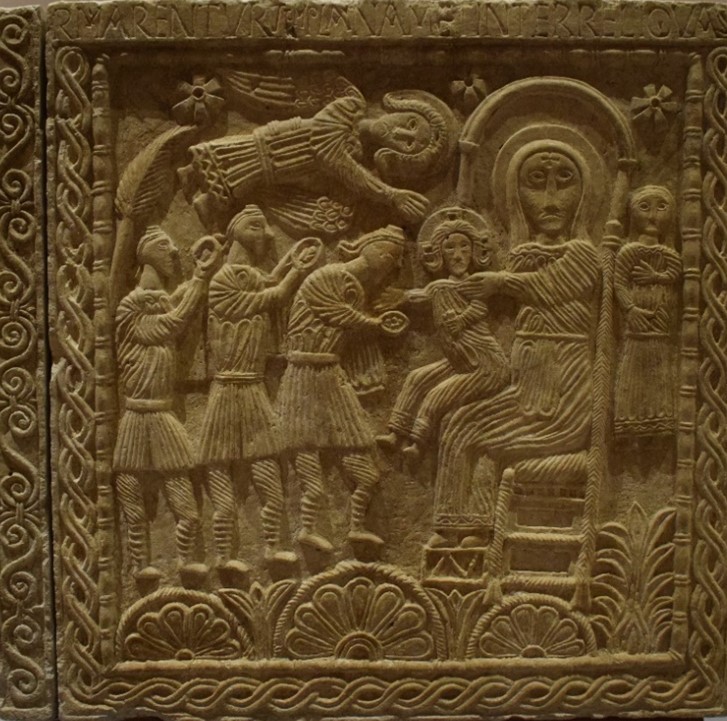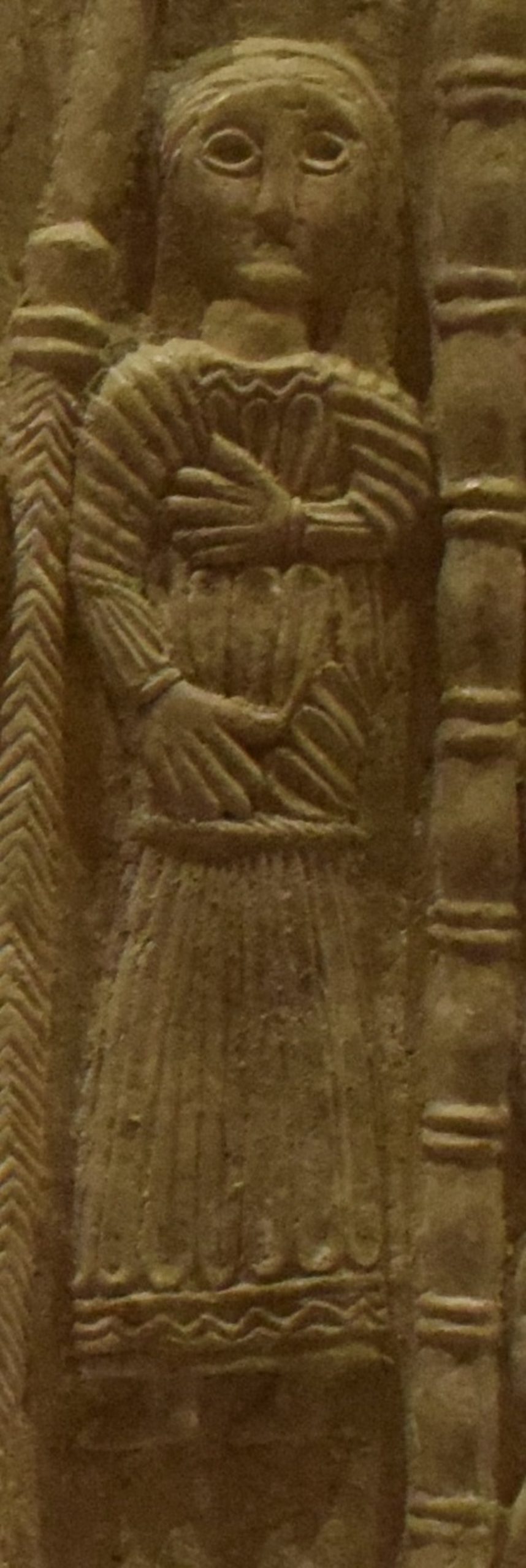Domestic Slavery and Medieval Christian Art: The Rachis Altar
- Erin Thomas Dailey
- 23 December 2023
- 0 Comment

An eighth-century altar, housed in the Museo Christiano & Tesoro del Duomo in the northern Italian town of Cividale del Friuli, possesses a stunning example of early medieval art, and—just possibly—a rare depiction of a female domestic slave. The altar is named after the ruler under whom it was produced: Ratchis, the dux of Friuli from 737 to 744 (who later became King of the Lombards, before he ended his life in a monastery). Carved into the front panel is a scene of Christ in majesty, with the side panels depicting the Visitation and the Adoration, in a distinctively early medieval style that departs from classical forms. It may seem an unusual place to look for evidence of domestic slavery, but…

The side panel of the Adoration presents a scene well known from the Christmas story, constructed from the infancy narratives found in the Gospels of Matthew (2:1–12) and Luke (2:1–20). Guided by a star, magi from the East come to Bethlehem to adore the newborn Christ Child and to offer him three gifts: gold, frankincense and myrrh. An angel of the Lord appears and praises God: ‘Glory to God in the highest, and on earth peace, goodwill toward men’. Each of these figures clearly appears on the panel, together with Mary, the mother of Jesus, seated on a throne. Yet there is one other figure intruding into the artwork, though in a most humble way: a small, female figure on the far right of the panel, carrying some sort of bushel in her hands, and standing behind the throne.

The figure is not identified on the piece. Nor is it entirely clear what she carries. Some clues have been lost: the altar shows signs that it was once painted, though it is impossible to reconstruct the original appearance (especially since repeated castings made in the twentieth century removed nearly all of the final vestiges of paint). But such paint is unlikely to have communicated essential information that revealed something not otherwise present on the image now. It must be assumed that the identity of the figure was apparent to its audience: so who is she?
Unlike the other figures depicted, there is no character in the Gospels to serve as an obvious reference. Could she be a midwife? The Protoevangelium of James, a second century text that circulated widely (in the West, its contents were largely known through the Gospel of Pseudo-Matthew) features a midwife. In fact, it features two: Zelomi and Salome. In a rather distasteful scene, Salome physically inspects Mary to corroborate her virginity, and as a punishment for her doubt her hand is shrivelled (and subsequently restored, following a moment of repentance). No sign of this visually distinctive element of the story appears on the Ratchis altar, and the presence of one, not two, unidentified figures argues against the midwife theory.
Does this figure perhaps represent the patron who commissioned the work? Patrons sometimes do intrude into early medieval art, especially on prominent, expensive pieces. Ratchis had a wife, who was named as Tasia (according to a marginal note in the Monte Cassino Chronicle). But it is difficult to explain why such a patron would not be identified on the piece itself. And the figure’s participation in the wider scene suggests that she is not so ancillary to the story.
A final possibility is that the figure in question represents a female domestic slave, depicted in the service of Mary and the Christ Child. Her presence, in this interpretation, further communicated the majesty and authority of the newborn dominus—a word that meant both Lord and Master. Her diminutive stature (no larger than the seated child and far smaller than the other figures), is consistent with depictions of slaves in late Roman and early medieval art as small people, sometimes indistinguishable from children, which represented their lowly status and the fact that domestic slaves were often literally children.
Slaves were never regular features in late Roman art, but they become an even rarer sight in the early Middle Ages, as the context of artistic productions increasingly shifted from secular (and thus domestic) to religious settings. The scene depicting the Adoration of the Magi on the Ratchis altar perhaps offers a rare opportunity to see a depiction of a female domestic slave in the post-Roman period, in which such a figure was used to communicate not only the intimate nature of the scene itself, but also the elevated status of Mary and the Christ Child. As part of an altar, the figure would have been seen by many people. One must wonder if any early medieval slaves viewed this particular piece. Did they identify themselves in the artwork? How did they interpret the scene? And what they might have felt in that moment?





